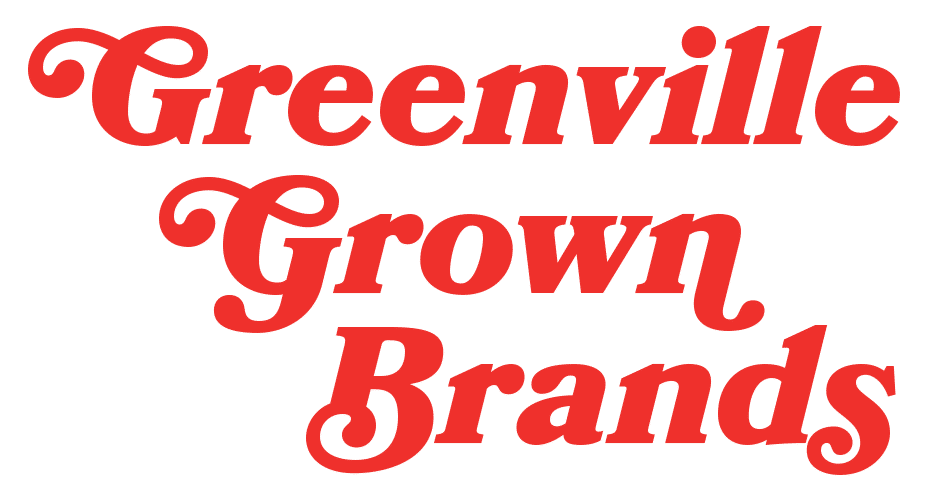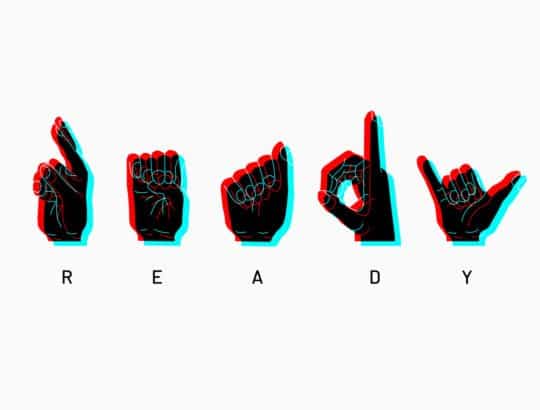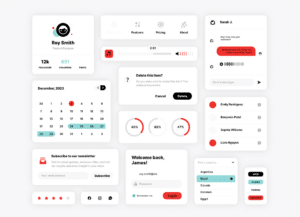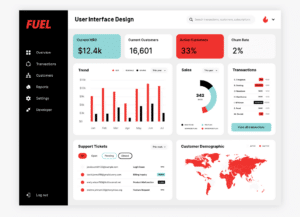We know launching a new website can trigger a lot of feelings . Stress from the time implications. Fear from the cost implications. Not to mention all the emotions that bubble up at the thought of CHANGE alone. We’re here to remind you that you’re not alone, we get these feels too, but… you’re going to experience all of these ups and downs with a poor website, too.
While that sinks in, peruse this checklist of 10 very matter-of-fact reasons your current site could be costing you valuable opportunities.
1. Your site isn’t optimized for mobile. Oof.
More than 50% of all web traffic originates from mobile devices, so take a moment to consider what half of your site visitors experience. Pull up your site on your phone or tablet. If you’re not able to read your site without zooming in, you have to scroll horizontally, or links are too close together to click with your finger, then that’s a frustrating experience for a mobile visitor. Because of this, Google now favors mobile-friendly websites in its search result rankings. Google too wants to ensure a great experience for its users not only on the search results page, but also in the quality of the sites it directs its users to.
2. Your site isn’t optimized for search engines.
Help search engines help you. Make it easy for them to know your content and understand what your site is about. There are so many factors that impact a site’s SEO, but a few basics include:
- Indexable content. In order for your most important content to be visible to search engines, it must be in HTML text format. Elements that a search engine can’t read, such as images, videos, and Flash media, should be supplemented with descriptive text. Also, be sure to double-check that critical site pages are not hidden from search engine crawlers by a “noindex, nofollow” meta robots tag.
- Keyword usage. Appropriate use of keywords and key phrases in title tags, URLs, and on-page content will make it possible for search engines to categorize and rank your site. Keyword research helps you find the right keywords to use and can guide your content strategy.
- Search -friendly URLs. Concise, descriptive URLs written for humans are best. The URL should make it clear to both users and search engines what the page is about.
A search engine-optimized site will have increased visibility and rankings in search engine results, helping you increase traffic and pull in more leads and customers to your site.
3. Your site doesn’t provide a good user experience.
User experience encompasses all aspects of interaction with your site. Is vital information clear? Does it provide what your audience is looking for? In general, does the site function well, and follow design best practices? Page organization should follow a simple, logical content hierarchy with main categories and subcategories. Pages should also be linked together in a consistent, organized navigation structure that makes it easy for users to locate information quickly. In a nutshell, your site should be tailored to your target demographic’s needs.
4. Your site loads at a snail’s pace.
The longer the load time, the faster the page abandonment. Obviously. Even worse, it’ll lead to lowered Google rankings, especially since Google rolled out its new ranking factor this year . So what causes slow load time in general? Uncompressed assets and images, bulky and inefficient code, poor server performance, excessive plugins, externally hosted assets, and too many redirects are all contributors to slow load times.
5. Your site’s bounce rate is high, while the conversion rate’s low.
Bounce rate is the percentage of visits in which users land on your home page then leave before exploring further. A high bounce rate can indicate that the page wasn’t relevant, or that there was no clear Call To Action. A conversion could be a submission on a contact form, an e-commerce purchase, or a newsletter sign-up; the conversion rate is the percentage of users who take that action out of the whole visitor total. If your website isn’t offering clear, compelling, and valuable options for visitors to convert, they might leave immediately and look elsewhere.
6. You can’t update content easily.
If your current site is not built on a Content Management System (CMS), then chances are you have to engage with a developer every single time a content update or change is needed on your site. This might mean your site doesn’t get updated often enough. If your site is built on a CMS, is the back-end interface intuitive and easy for you to use? A good CMS can streamline your content update process by providing an easy-to-use interface for making quick content updates.
7. Your site no longer reflects your brand.
Over time, your brand’s logo and brand standards will likely evolve. Visual brand queues that are mismatched across different media can confuse your site visitors. Your brand’s logo, fonts, and color palette should be up to date and consistent across all of your marketing channels.
8. Your site looks dated.
Visuals make a faster first impression than words on a page. And similar to changes in technology, web design trends have changed over the years too. If your site was designed more than five years ago, there’s a strong possibility that its look and feel has expired. Plus, content that hasn’t been kept up to date (a copyright year in the footer, or no new articles for years) can be a clue to visitors that the site has been neglected, if not out-of-business altogether.
9. Your site doesn’t align with your current marketing goals.
Goals shift. Dynamics change. What metrics you have determined are important to your business should define the overall purpose, drive the strategy, and determine the functionality requirements of your website. Be sure your site and business goals align.
10. Your site just doesn’t … work?
If your site’s experiencing chronic technical difficulties, barely hanging on with outdated technology, or dealing with persistent security issues, don’t hesitate to give us a call ASAP.
The post 10 Signs You Need A New Website appeared first on FUEL.








